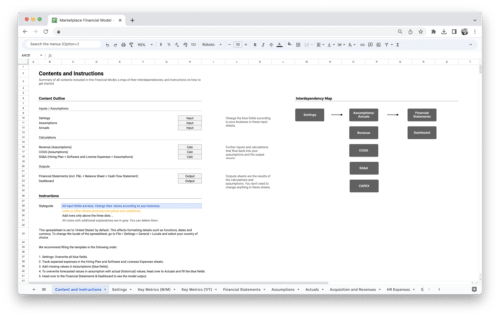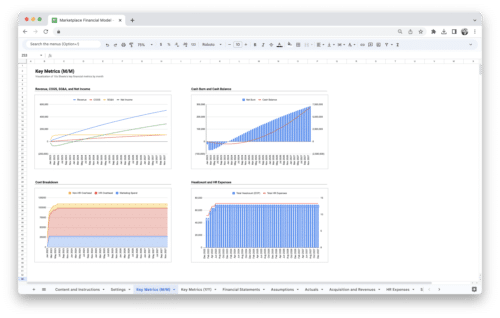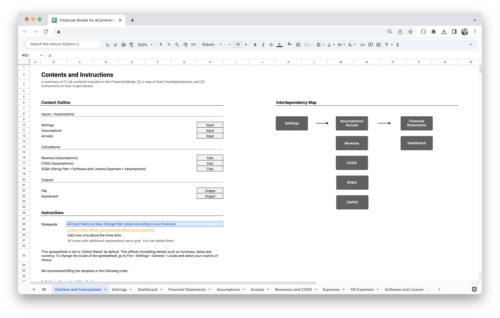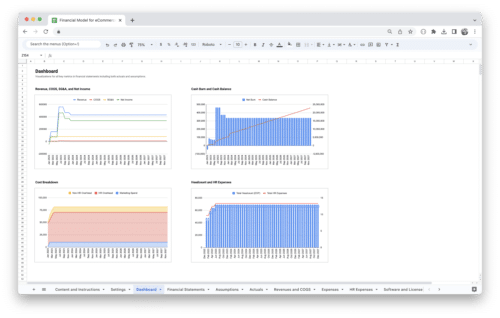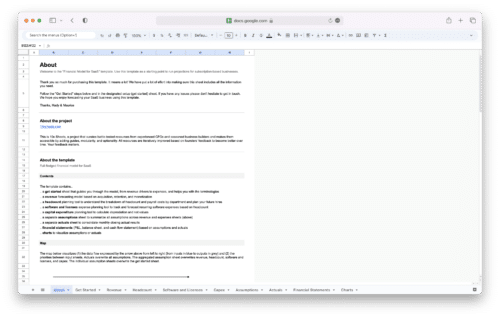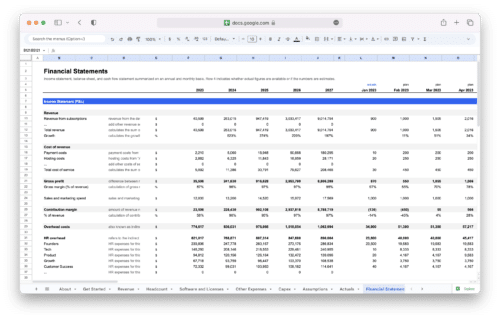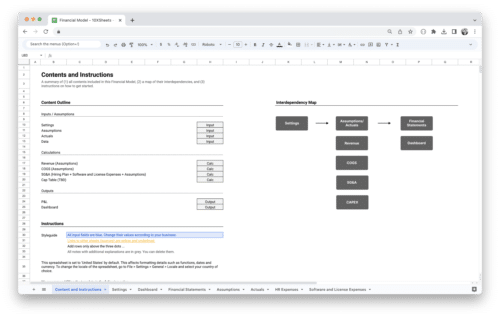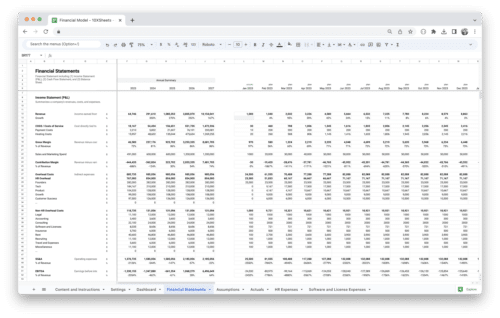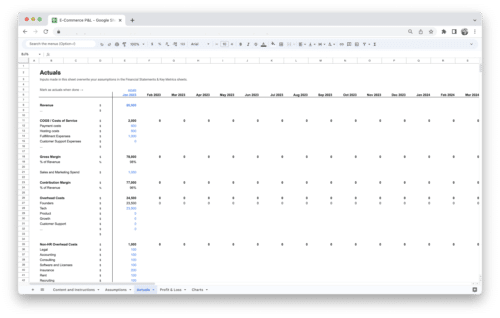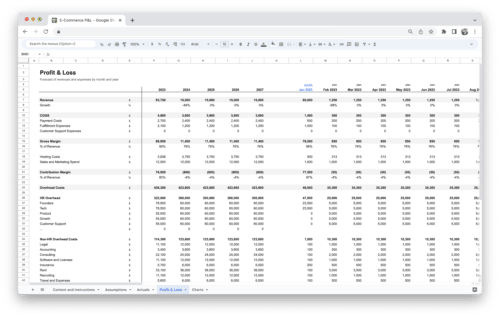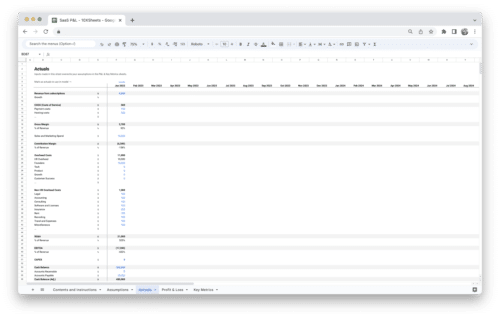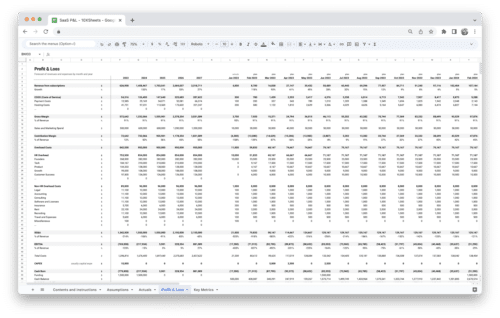
Ever wondered how you can compare scores from different tests, identify unusual data points, or assess the quality of a product? The Z-Score is your answer. This powerful statistical tool transforms raw data into a standardized format, allowing you to see how each value stacks up against the rest of the dataset. Whether you’re dealing with test scores, financial metrics, or quality control measurements, understanding Z-Scores can provide valuable insights into the relative position and significance of your data points. In this guide, we’ll break down the concept of Z-Scores, explore how they are calculated, and uncover their various applications, helping you make sense of your data and apply these insights effectively.
What is Z-Score?
A Z-Score, also known as a standard score, is a statistical measure that describes a value’s position in relation to the mean of a dataset, expressed in terms of standard deviations. It helps standardize scores from different distributions, making comparisons easier.
To calculate a Z-Score, you use the formula:
Z = (X - μ) / σ
where:
- X represents the raw score.
- μ is the mean of the dataset.
- σ is the standard deviation of the dataset.
The Z-Score tells you how many standard deviations a given score is from the mean. For example, a Z-Score of 2 means the score is 2 standard deviations above the mean, while a Z-Score of -1 indicates the score is 1 standard deviation below the mean.
Calculation Example
If you have a dataset of exam scores where the mean is 70 and the standard deviation is 10, a score of 85 would have a Z-Score calculated as follows:
Z = (85 - 70) / 10 = 15 / 10 = 1.5
This means the score of 85 is 1.5 standard deviations above the mean score of 70.
Historical Background and Development
The concept of the Z-Score has its roots in early statistical methods used to standardize and compare data. Its development reflects the evolution of statistical theory and practice.
The Z-Score concept emerged from the work of statisticians who were interested in standardizing measurements across different datasets. Early applications of statistical standardization can be traced back to the work of Karl Pearson and Sir Francis Galton in the late 19th and early 20th centuries. They focused on the normal distribution and measures of central tendency and dispersion.
The Z-Score became more formalized with the development of probability theory and the normal distribution. The standardization process, where data is transformed to compare relative positions, gained prominence with the work of statisticians such as Ronald A. Fisher and Jerzy Neyman. Their work on hypothesis testing and inferential statistics solidified the role of standardized scores like the Z-Score in statistical analysis.
In the latter half of the 20th century and into the 21st century, the Z-Score has become a fundamental tool in various fields, including finance, psychology, and education. Its ability to standardize and compare data across different contexts has made it a cornerstone of modern statistical practice.
Importance and Applications of Z-Score in Statistics
Z-Scores are integral to statistical analysis due to their versatility and utility in various applications. Here’s why they are important and how they are used:
- Standardization: Z-Scores standardize data, allowing for comparisons across different distributions and scales. This is particularly useful when combining datasets from different sources or when working with variables measured on different scales.
- Identifying Outliers: By quantifying how far a data point is from the mean, Z-Scores help in detecting outliers—values that deviate significantly from the rest of the dataset.
- Hypothesis Testing: Z-Scores are used in hypothesis testing to determine whether observed data deviates significantly from the null hypothesis, aiding in statistical inference.
- Risk Assessment: In fields like finance, Z-Scores help assess the likelihood of financial distress or bankruptcy by standardizing financial metrics.
- Quality Control: In manufacturing and quality control, Z-Scores are used to monitor product quality and detect defects by comparing measurements to acceptable ranges.
- Educational Testing: Z-Scores are used to evaluate student performance relative to their peers, providing a standardized measure of academic achievement.
Mathematical Foundation of Z-Scores
Understanding the mathematical foundation of Z-Scores is crucial for applying them accurately and effectively. Here, we’ll break down the formula, explain the components involved, and explore how to interpret Z-Scores.
Z-Score Formula and Calculation
To calculate a Z-Score, you use the following formula:
Z = (X - μ) / σ
Here’s a step-by-step breakdown of the formula:
- X: This is the raw score, the value you’re interested in analyzing.
- μ (Mean): This represents the average of all values in your dataset.
- σ (Standard Deviation): This measures the amount of variation or dispersion of the values from the mean.
Example Calculation
Let’s say you have a dataset of test scores from a class where the mean score is 75 and the standard deviation is 10. If a student scored 85, the Z-Score can be calculated as follows:
Z = (85 - 75) / 10 = 10 / 10 = 1
This Z-Score of 1 indicates that the student’s score is 1 standard deviation above the mean.
Z-Score Components: Mean, Standard Deviation, and Raw Score
To fully grasp Z-Scores, it’s important to understand the components involved in the calculation.
Mean (μ)
The mean, or average, is calculated by summing all the values in your dataset and dividing by the number of values. It represents the central point around which the data is distributed.
For example, if you have test scores of 70, 80, 90, and 100:
Mean = (70 + 80 + 90 + 100) / 4 = 340 / 4 = 85
Standard Deviation (σ)
Standard deviation quantifies the amount of dispersion or spread in your dataset. It is calculated using the following steps:
- Find the variance, which is the average of the squared differences between each data point and the mean.
- Take the square root of the variance to get the standard deviation.
For the dataset above:
- Find the variance:
- Differences from the mean: (70-85)^2, (80-85)^2, (90-85)^2, (100-85)^2
- Variance = [(15)^2 + (-5)^2 + 5^2 + 15^2] / 4 = [225 + 25 + 25 + 225] / 4 = 500 / 4 = 125
- Standard deviation = √125 ≈ 11.18
Raw Score (X)
The raw score is the specific data point you are analyzing. It represents the individual observation or measurement in your dataset.
Interpretation of Z-Score Values
Interpreting Z-Scores helps you understand how a particular data point compares to the rest of the data. Here’s how to make sense of different Z-Scores:
Z-Score of 0
A Z-Score of 0 means that the raw score is exactly equal to the mean of the dataset. This indicates that the value is at the average position in the distribution.
Positive Z-Scores
A positive Z-Score indicates that the raw score is above the mean. The higher the Z-Score, the further away the score is from the mean. For example:
- Z = 1: The score is 1 standard deviation above the mean.
- Z = 2.5: The score is 2.5 standard deviations above the mean, indicating a value significantly higher than average.
Negative Z-Scores
A negative Z-Score means that the raw score is below the mean. The lower the Z-Score, the further away the score is from the mean. For example:
- Z = -1: The score is 1 standard deviation below the mean.
- Z = -3: The score is 3 standard deviations below the mean, suggesting a value significantly lower than average.
Practical Implications
Understanding Z-Scores in context is crucial. For instance, in a test with a mean of 75 and a standard deviation of 10:
- A Z-Score of 2 corresponds to a score of 95, which might indicate a top performer in the class.
- A Z-Score of -1 corresponds to a score of 65, which might indicate a student performing below the average.
In summary, mastering the mathematical foundation of Z-Scores enables you to standardize and compare data effectively, providing deeper insights into how individual values relate to the overall dataset.
Z-Score Applications
Z-Scores are incredibly versatile and find applications in various fields, from education to finance. By standardizing data, identifying outliers, and assessing risk, Z-Scores offer valuable insights. Let’s delve into these practical applications in more detail.
Standardizing Data for Comparisons
Standardizing data is crucial when comparing values from different datasets, especially when the datasets have different scales or units. Z-Scores convert raw scores into a common scale, allowing for straightforward comparisons.
How Standardization Works
When you standardize data, you transform your scores into Z-Scores, which tell you how many standard deviations a score is from the mean. This process allows you to compare scores from different distributions on an equal footing.
For instance, imagine comparing student performance from two different exams: one with a mean score of 60 and a standard deviation of 15, and another with a mean score of 80 and a standard deviation of 10. If a student scores 75 on the first exam and 85 on the second, these scores are not directly comparable due to the different scales.
By converting these scores to Z-Scores, you standardize them:
For the first exam:
Z1 = (75 - 60) / 15 = 15 / 15 = 1
For the second exam:
Z2 = (85 - 80) / 10 = 5 / 10 = 0.5
Now you can see that the student’s performance on the first exam is 1 standard deviation above the mean, while on the second exam, it is 0.5 standard deviations above the mean. This standardization allows you to compare their relative performance across different exams.
Identifying Outliers
Outliers are data points that differ significantly from the majority of your data. Z-Scores help identify these outliers by measuring how far away a score is from the mean.
How Z-Scores Indicate Outliers
Typically, data points with Z-Scores above 2 or below -2 are considered outliers. This threshold indicates that a data point is more than 2 standard deviations away from the mean, suggesting it is unusually high or low compared to the rest of the data.
For example, in a dataset of employees’ performance ratings with a mean of 75 and a standard deviation of 10, a performance score of 95 would have a Z-Score of:
Z = (95 - 75) / 10 = 20 / 10 = 2
This Z-Score of 2 indicates that the score is at the upper edge of typical performance. Conversely, a score of 55 would have a Z-Score of:
Z = (55 - 75) / 10 = -20 / 10 = -2
This Z-Score of -2 suggests that the score is at the lower edge of typical performance. Identifying such outliers can help in understanding exceptional cases or errors in data collection.
Risk Assessment and Quality Control
In risk assessment and quality control, Z-Scores are used to evaluate and manage potential risks and ensure product quality.
Applications in Financial Risk Assessment
In finance, Z-Scores are often used to assess the likelihood of a company facing financial distress or bankruptcy. One popular model is the Altman Z-Score, which combines multiple financial ratios into a single score to predict bankruptcy risk. The formula for the Altman Z-Score is:
Z = 1.2 * X1 + 1.4 * X2 + 3.3 * X3 + 0.6 * X4 + 1.0 * X5
Where:
- X1: Working Capital / Total Assets
- X2: Retained Earnings / Total Assets
- X3: Earnings Before Interest and Taxes / Total Assets
- X4: Market Value of Equity / Total Liabilities
- X5: Sales / Total Assets
A Z-Score below a certain threshold indicates higher bankruptcy risk, guiding investors and managers in their decision-making.
Applications in Quality Control
In manufacturing, Z-Scores help monitor and control the quality of products. By analyzing the Z-Scores of product measurements, manufacturers can detect deviations from quality standards and implement corrective actions. For example, if the mean diameter of a component is 10 cm with a standard deviation of 0.2 cm, a component with a diameter of 10.5 cm would have a Z-Score of:
Z = (10.5 - 10) / 0.2 = 0.5 / 0.2 = 2.5
A Z-Score of 2.5 indicates that the component is significantly larger than the average, which might trigger a quality check.
Use in Hypothesis Testing
In hypothesis testing, Z-Scores help determine how far your sample statistic is from the null hypothesis, allowing you to make inferences about your data.
Applying Z-Scores in Hypothesis Testing
When performing a hypothesis test, you calculate the Z-Score for your sample data and compare it to a critical value from the Z-distribution. This helps you decide whether to reject the null hypothesis.
For example, suppose you want to test if a new teaching method significantly changes student test scores compared to the old method. You might use the following Z-Test formula for the sample mean:
Z = (X̄ - μ) / (σ / √n)
Where:
- X̄: Sample mean
- μ: Population mean under the null hypothesis
- σ: Population standard deviation
- n: Sample size
If your calculated Z-Score is beyond the critical value for your chosen significance level (e.g., 1.96 for a 95% confidence level), you reject the null hypothesis, indicating a significant effect.
Example
Imagine the average test score with the old method is 70. After using the new method, a sample of 30 students has a mean score of 73 with a standard deviation of 8. The Z-Score for this sample mean would be:
Z = (73 - 70) / (8 / √30) ≈ 3 / 1.46 ≈ 2.05
A Z-Score of 2.05 is greater than 1.96, so you would reject the null hypothesis, suggesting the new method has a statistically significant effect on scores.
In summary, Z-Scores are invaluable tools for standardizing data, identifying outliers, assessing risk, and conducting hypothesis testing. By understanding and applying Z-Scores effectively, you can gain deeper insights and make more informed decisions in various contexts.
Advanced Concepts and Variations of Z-Scores
While Z-Scores are a fundamental statistical tool, their application can vary based on the distribution of your data and how they relate to other statistical measures. Additionally, understanding their limitations and assumptions is crucial for effective use. Let’s dive into these advanced concepts.
Z-Score in Different Distributions
Z-Scores are most effective when dealing with data that follows a normal distribution, but what happens when your data does not fit this pattern?
Normal Distribution
In a normal distribution, data is symmetrically distributed around the mean, and Z-Scores are directly interpretable. A Z-Score of 1, for example, corresponds to the 84th percentile of the data, meaning it is higher than 84% of the scores. This direct relationship is one of the reasons why Z-Scores are so useful in normal distributions.
Non-Normal Distributions
When data does not follow a normal distribution, interpreting Z-Scores becomes less straightforward. In such cases:
- Skewed Distributions: If data is skewed (not symmetrical), Z-Scores might not accurately reflect the relative standing of a score. For example, in a positively skewed distribution (where the tail extends to the right), a Z-Score might indicate a score is unusually high even if it’s not significantly different from other values.
- Bimodal Distributions: In distributions with two distinct peaks, Z-Scores may not capture the full picture. A Z-Score might suggest a score is typical when it actually falls in a less frequent range.
For non-normal distributions, consider using other statistical tools or transforming the data to approximate normality, such as log transformations or using non-parametric methods.
Relationship with Other Statistical Measures
Z-Scores are not the only measure used to describe data relative to a distribution. Here’s how they relate to other common statistical measures.
T-Score
The T-Score is similar to the Z-Score but is used when dealing with small sample sizes and when the population standard deviation is unknown. It is part of the t-distribution, which adjusts for sample size and is particularly useful for hypothesis testing in these conditions.
The T-Score formula is:
T = (X̄ - μ) / (s / √n)
Where:
- X̄: Sample mean
- μ: Population mean
- s: Sample standard deviation
- n: Sample size
Unlike the Z-Score, which uses the standard normal distribution, the T-Score uses the t-distribution, which becomes more similar to the normal distribution as sample size increases.
Percentile Rank
Percentile rank indicates the percentage of scores that fall below a given score in a dataset. While Z-Scores provide a measure of how many standard deviations a score is from the mean, percentile ranks give a more intuitive understanding of a score’s position relative to the entire dataset.
For example, a Z-Score of 1 corresponds to approximately the 84th percentile, meaning that a score at this Z-Score is higher than 84% of the scores in a normal distribution. Percentile ranks can be particularly useful for interpreting scores in educational testing and psychological assessments.
Limitations and Assumptions
While Z-Scores are a powerful tool, they come with limitations and assumptions that must be considered:
- Assumption of Normality: Z-Scores assume data follows a normal distribution. If data is heavily skewed or has outliers, Z-Scores may not provide an accurate representation.
- Sensitivity to Outliers: Extreme values can affect the mean and standard deviation, potentially distorting the Z-Scores.
- Dependence on Accurate Mean and Standard Deviation: Accurate calculation of Z-Scores relies on correct mean and standard deviation values. Errors in these calculations can lead to misleading Z-Scores.
- Not Always Suitable for Small Sample Sizes: In small samples, Z-Scores may not accurately reflect the distribution due to higher variability in mean and standard deviation estimates.
- Does Not Imply Causation: A high or low Z-Score indicates a value’s position relative to the mean but does not imply a causal relationship between variables.
Understanding these aspects of Z-Scores helps ensure you use them effectively and interpret them accurately in various contexts.
Z-Score Examples
Z-Scores offer a versatile way to interpret data across different contexts. Here, we’ll explore several examples to illustrate how Z-Scores can be applied in real-world situations. Each example demonstrates how Z-Scores can be calculated and interpreted to gain insights from various types of data.
Example 1: Exam Scores
Imagine you are comparing students’ performance on two different exams.
Scenario
- Exam 1: Mean score = 80, Standard deviation = 5
- Exam 2: Mean score = 70, Standard deviation = 10
A student scored 85 on Exam 1 and 85 on Exam 2.
Calculation
For Exam 1:
Z1 = (85 - 80) / 5 = 5 / 5 = 1
For Exam 2:
Z2 = (85 - 70) / 10 = 15 / 10 = 1.5
Interpretation
The Z-Score of 1 for Exam 1 means the student’s score is 1 standard deviation above the mean. The Z-Score of 1.5 for Exam 2 indicates the score is 1.5 standard deviations above the mean. This comparison shows that, relative to the mean score of each exam, the student performed better on Exam 2, despite having the same raw score.
Example 2: Financial Performance
Consider evaluating the performance of two companies based on their annual returns.
Scenario
- Company A: Mean annual return = 8%, Standard deviation = 2%
- Company B: Mean annual return = 10%, Standard deviation = 4%
Company A had a return of 12%, and Company B had a return of 14%.
Calculation
For Company A:
Z_A = (12 - 8) / 2 = 4 / 2 = 2
For Company B:
Z_B = (14 - 10) / 4 = 4 / 4 = 1
Interpretation
The Z-Score of 2 for Company A shows that its return is 2 standard deviations above the mean, indicating an exceptionally strong performance relative to its past returns. Company B’s Z-Score of 1 indicates a return 1 standard deviation above the mean, suggesting strong but not as exceptional performance compared to Company A.
Example 3: Quality Control in Manufacturing
A manufacturer is monitoring the diameters of a component where the target mean is 50 mm with a standard deviation of 0.5 mm.
Scenario
A batch of components has a measured diameter of 51 mm.
Calculation
Z = (51 - 50) / 0.5 = 1 / 0.5 = 2
Interpretation
A Z-Score of 2 indicates that the diameter is 2 standard deviations above the mean, suggesting it is larger than most components produced and might be outside the acceptable range, potentially signaling a quality issue.
Example 4: Academic Testing
In an academic setting, you are assessing the performance of students on a standardized test with a mean score of 65 and a standard deviation of 8.
Scenario
A student scored 50 on the test.
Calculation
Z = (50 - 65) / 8 = -15 / 8 = -1.875
Interpretation
A Z-Score of -1.875 indicates the student’s score is 1.875 standard deviations below the mean. This suggests that the student performed significantly below the average score, which could be used to identify students who may need additional support.
Example 5: Healthcare Metrics
In healthcare, suppose a clinic tracks patients’ cholesterol levels with a mean of 200 mg/dL and a standard deviation of 20 mg/dL.
Scenario
A patient’s cholesterol level is 240 mg/dL.
Calculation
Z = (240 - 200) / 20 = 40 / 20 = 2
Interpretation
A Z-Score of 2 means the patient’s cholesterol level is 2 standard deviations above the mean, indicating a higher-than-average level, which might prompt further investigation or intervention.
These examples demonstrate how Z-Scores can be applied in various fields to assess performance, quality, and risk. By converting raw scores into a standardized format, you gain a clearer understanding of how data points relate to the overall distribution.
Tools and Software for Calculating Z-Scores
Calculating Z-Scores can be streamlined using various tools and software. Depending on your needs—whether for professional data analysis, academic purposes, or quick calculations—different methods can be more suitable. Here’s a look at the most commonly used tools and techniques.
Statistical Software Packages
For in-depth statistical analysis, several software packages can simplify the calculation of Z-Scores and offer additional functionalities for data manipulation and interpretation.
SPSS
SPSS (Statistical Package for the Social Sciences) is a comprehensive software used for statistical analysis. It provides user-friendly options for calculating Z-Scores as part of its broader statistical capabilities. You can easily compute Z-Scores by:
- Importing your dataset.
- Using the “Descriptive Statistics” feature to compute mean and standard deviation.
- Applying the Z-Score formula through the software’s computation options or syntax commands.
R
R is a powerful programming language and software environment for statistical computing. It offers extensive packages for statistical analysis, including Z-Score calculations. In R, you can use functions such as scale() to standardize data, which computes Z-Scores by default. For example:
# Assuming 'data' is a numeric vector
z_scores <- scale(data)
This command will return Z-Scores for each value in the dataset.
Python
Python, with libraries such as NumPy and pandas, is widely used for data analysis. Calculating Z-Scores in Python is straightforward. Here’s a simple example using NumPy:
import numpy as np
# Assuming ‘data’ is a numpy array
mean = np.mean(data)
std_dev = np.std(data)
z_scores = (data – mean) / std_dev
This code snippet computes the mean, standard deviation, and then calculates the Z-Scores for your dataset.
Online Calculators and Tools
For quick and easy Z-Score calculations without the need for extensive software, online calculators are a convenient option. These tools typically require you to input:
- The raw score.
- The mean of the dataset.
- The standard deviation of the dataset.
Upon entering these values, the calculator provides the Z-Score instantly. Some popular online calculators include:
- Calculator.net: Offers a straightforward Z-Score calculator that’s easy to use.
- Social Science Statistics: Provides an online Z-Score calculator with options for various statistical calculations.
Spreadsheet Templates
Spreadsheets are a versatile tool for calculating Z-Scores, especially if you prefer a visual approach or are working with large datasets. Both Microsoft Excel and Google Sheets can be used for this purpose.
Microsoft Excel
In Excel, you can calculate Z-Scores using built-in functions. Here’s how:
- Calculate the mean and standard deviation using
=AVERAGE(range)and=STDEV.P(range)respectively. - Use the formula
=(A1 - mean) / std_devin a new column to compute the Z-Score for each data point.
Excel also allows you to automate these calculations using formulas and cell references, which is useful for handling large datasets.
Google Sheets
Google Sheets functions similarly to Excel. You can calculate Z-Scores by:
- Using
=AVERAGE(range)to find the mean. - Using
=STDEVP(range)for the standard deviation. - Applying the Z-Score formula in a new column to each value.
Both Excel and Google Sheets also support custom scripts and add-ons for more advanced statistical analysis.
Manual Calculation Techniques
For educational purposes or when working with smaller datasets, calculating Z-Scores manually can be a good exercise. Here’s a step-by-step approach:
- Find the Mean: Add all data points and divide by the number of points.
Mean (μ) = ΣX / N
- Find the Standard Deviation: Compute the variance by averaging the squared differences between each data point and the mean, then take the square root.
Variance = Σ(X - μ)² / N
Standard Deviation (σ) = √Variance
- Calculate the Z-Score: Apply the Z-Score formula.
Z = (X - μ) / σ
For example, if you have a dataset of test scores, calculate the mean and standard deviation first, then use the formula to determine the Z-Score for each score.
Z-Score Pitfalls and Misconceptions
Understanding and using Z-Scores effectively requires awareness of common pitfalls and misconceptions:
- Assuming Normal Distribution: Z-Scores are most accurate when data follows a normal distribution. For non-normal distributions, the Z-Score might be misleading.
- Misinterpreting Z-Scores: A high Z-Score doesn’t necessarily imply a value is “better” or “worse”; it simply indicates how far the score is from the mean.
- Overlooking Context: The significance of a Z-Score depends on context and the specific application. High or low Z-Scores should be interpreted with respect to the dataset and the field of study.
- Errors in Calculation: Incorrect mean or standard deviation calculations can lead to inaccurate Z-Scores. Ensure precise data handling and calculations.
- Neglecting Sample Size: Small sample sizes can lead to unreliable Z-Scores due to higher variability and less accurate mean and standard deviation estimates.
Being aware of these issues helps ensure you use Z-Scores accurately and interpret them correctly in various analyses.
Conclusion
Understanding Z-Scores provides you with a powerful tool for analyzing data and making meaningful comparisons. By converting raw scores into a standardized format, Z-Scores make it easier to assess how individual values relate to the rest of your dataset. Whether you’re comparing test results across different exams, identifying outliers in a dataset, or evaluating financial risks, Z-Scores help you interpret data in a consistent and straightforward way. This standardization is crucial for making accurate comparisons and informed decisions based on your analysis.
However, it’s important to remember that while Z-Scores are a valuable tool, they come with certain limitations and assumptions. They work best with normally distributed data and may not always be reliable with skewed or non-normal distributions. Additionally, careful attention to the accuracy of your mean and standard deviation calculations is essential for obtaining meaningful Z-Scores. By being aware of these factors and understanding the full context of your data, you can use Z-Scores effectively to enhance your statistical analysis and gain clearer insights into your data.
Get Started With a Prebuilt Template!
Looking to streamline your business financial modeling process with a prebuilt customizable template? Say goodbye to the hassle of building a financial model from scratch and get started right away with one of our premium templates.
- Save time with no need to create a financial model from scratch.
- Reduce errors with prebuilt formulas and calculations.
- Customize to your needs by adding/deleting sections and adjusting formulas.
- Automatically calculate key metrics for valuable insights.
- Make informed decisions about your strategy and goals with a clear picture of your business performance and financial health.

